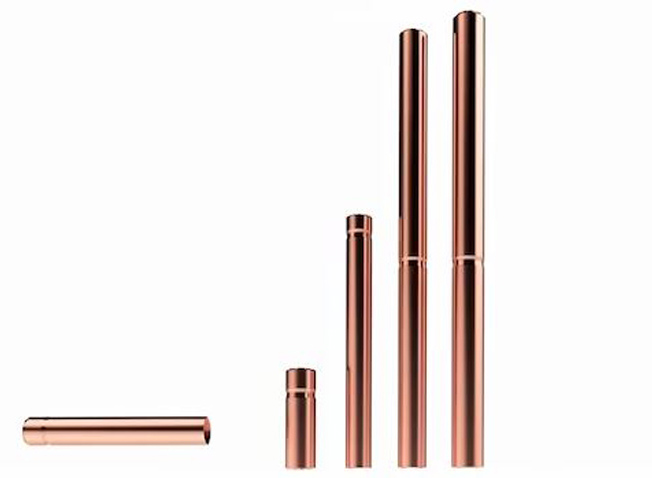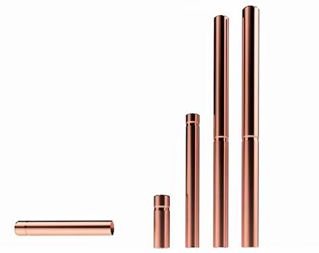Welcome to the world of precision and power—spot welding copper! This intricate process demands the perfect blend of skill and technology. In this article, we delve into the art of spot welding copper, uncovering the methods and machinery required to achieve seamless and durable joints.
Spot welding and its applications
Spot welding, also known as resistance spot welding, is a process in which contacting metal surfaces are joined by the heat obtained from resistance to electric current. This method is widely used in various industries such as automotive, aerospace, electronics, and metal fabrication. When it comes to joining copper components, precision is paramount. Whether you are in the realm of electronics, automotive, or metalwork, mastering the spot welding of copper is a game-changer.

Spot welding is especially favored for its ability to create strong, durable welds quickly and efficiently. The process involves applying pressure and passing a high electrical current through the copper components to be joined. The heat generated from the resistance to the electric current melts the copper at the welding point, creating a solid bond when the pressure is released.
Spot welding copper offers a fast and reliable way to join copper components, making it an essential technique in industries where high conductivity and durability are crucial. As we deep-dive into the nuances of this process, you’ll discover the essential techniques and best practices for creating strong, reliable bonds.
Advantages of spot welding copper
The advantages of spot welding copper are numerous, making it a preferred method for joining copper components. One of the key benefits is the speed at which spot welding can be performed. The process enables quick, repetitive welding, making it ideal for high-volume production environments. Additionally, spot welding copper produces minimal splatter and fumes, contributing to a cleaner and safer working environment.
Furthermore, spot welding creates strong and durable joints, ensuring the integrity of the copper components. The welds are resistant to mechanical stress and provide high electrical conductivity, making them ideal for applications where the flow of electricity is critical. The ability to create consistent and uniform welds adds to the reliability of spot welding copper, making it a cost-effective and efficient joining method.
Challenges of spot welding copper
While spot welding copper offers numerous advantages, it also presents its own set of challenges. One of the primary challenges is the high thermal and electrical conductivity of copper. This characteristic requires specialized welding equipment and techniques to ensure proper heat generation and control during the welding process. Additionally, the surface oxidation of copper can affect the quality of the weld, necessitating the use of appropriate surface preparation methods.
Another challenge lies in achieving consistent weld quality, especially when working with thin copper materials. Controlling the welding parameters to prevent burn-through or insufficient fusion requires precision and expertise. The high reflectivity of copper can pose challenges in terms of laser targeting and heat absorption during the welding process. Overcoming these challenges requires a deep understanding of the material properties and advanced welding techniques.
Factors to consider in spot welding copper
When venturing into spot welding copper, several critical factors must be considered to ensure successful and reliable welds. The conductivity of copper plays a significant role in determining the welding parameters, including current, time, and pressure. Understanding the material’s conductivity allows for precise control of the welding process, resulting in consistent and robust joints.
Surface preparation is another crucial factor to consider when spot welding copper. Proper cleaning and surface treatment are essential to remove oxide layers and contaminants that can hinder the welding process. Additionally, the thickness and geometry of the copper components influence the welding parameters, requiring adjustments to achieve optimal weld quality.
The selection of electrodes and their configuration is vital in spot welding copper. Electrode materials, shapes, and sizes impact the heat distribution and contact area, affecting the weld quality and strength. Moreover, the design of the welding fixture and the positioning of the components play a crucial role in ensuring accurate alignment and consistent welds. By carefully considering these factors, the spot welding of copper can be executed with precision and efficiency.
Types of spot welding equipment for copper
Spot welding copper necessitates the use of specialized equipment designed to handle the unique properties of the material. The choice of welding machine, electrodes, and control systems significantly impacts the quality and efficiency of the welding process. Capacitive discharge spot welders, in particular, are well-suited for welding copper due to their ability to deliver precise, short-duration energy pulses, minimizing heat-affected zones and distortion.
In addition to the welding machine, the selection of electrodes is crucial in spot welding copper. Copper alloys or refractory metals are commonly used as electrode materials to withstand the high thermal and electrical conductivity of copper. The design of the electrodes, including their shape and surface finish, influences the heat distribution and contact resistance, ultimately affecting the quality of the welds.
Advanced control systems, such as microprocessor-based weld controllers, offer precise monitoring and adjustment of welding parameters, ensuring consistent and repeatable weld quality. These systems enable real-time monitoring of the welding process, allowing for fine-tuning of parameters to accommodate variations in material thickness and composition. By leveraging the appropriate spot welding equipment, the challenges associated with welding copper can be effectively addressed, leading to superior weld quality and productivity.
Best practices for welding copper
Achieving optimal results in spot welding copper requires adherence to best practices that encompass material preparation, equipment setup, and weld quality assessment. Prior to welding, thorough cleaning of the copper surfaces is essential to remove oxide layers and contaminants that can compromise the weld integrity. Proper surface treatment methods, such as mechanical abrasion or chemical cleaning, ensure a clean and reactive surface for the welding process.
When setting up the welding equipment, it is crucial to establish the appropriate welding parameters based on the material thickness, conductivity, and desired weld quality. This includes determining the optimal current, welding time, and electrode force to achieve consistent and reliable welds. The electrode configuration and alignment must be carefully adjusted to ensure uniform heat distribution and proper contact with the copper components.
During the welding process, continuous monitoring of the weld quality is essential to detect any deviations or defects. Non-destructive testing methods, such as visual inspection and ultrasonic testing, can be employed to assess the integrity of the welds. Additionally, documenting the welding parameters and conducting periodic quality checks contribute to the traceability and quality assurance of spot-welded copper components.
By following these best practices, practitioners can elevate their spot welding capabilities, ensuring the production of high-quality and reliable copper joints for various applications.
Safety measures for spot welding copper
Safety is paramount when engaging in welding copper, as the process involves high electrical currents and heat generation. Prior to conducting any welding operations, personnel must be equipped with appropriate personal protective equipment (PPE), including safety glasses, welding gloves, and flame-resistant clothing. Ensuring a well-ventilated work environment minimizes exposure to fumes and gases produced during the welding process.
Furthermore, adherence to electrical safety protocols is critical to prevent electrical hazards and shocks. Inspecting the welding equipment for any defects or malfunctions before operation reduces the risk of accidents. Proper grounding of the welding machine and components is essential to mitigate the potential for electrical hazards.
In addition to personal safety measures, fire prevention and suppression systems should be in place to address any potential welding-related fires. Having fire extinguishers and fire blankets readily accessible in the welding area enhances the overall safety preparedness.
By prioritizing safety measures and adhering to established safety protocols, practitioners can create a secure working environment for spot welding copper, minimizing the risk of accidents and ensuring the well-being of personnel.
Common mistakes in welding copper
Despite the precision and expertise required in spot welding copper, several common mistakes can compromise the quality and integrity of the welds. One prevalent mistake is inadequate surface preparation, which leads to poor weld adhesion and increased electrical resistance. Neglecting thorough cleaning and surface treatment can result in weakened welds and reduced conductivity.
Improper selection and setup of welding parameters represent another common pitfall in spot welding copper. Inaccurate current, time, or electrode force settings can lead to insufficient fusion, burn-through, or excessive heat-affected zones, compromising the overall weld quality. Additionally, neglecting to monitor and adjust the welding parameters during the process can result in inconsistent and subpar welds.
Inadequate electrode maintenance and alignment can also contribute to welding defects in spot welding copper. Worn or contaminated electrodes can impede heat transfer and lead to non-uniform welds. Proper electrode maintenance and regular inspection are essential to ensure optimal performance and weld quality.
Furthermore, overlooking safety precautions and PPE requirements poses a significant risk in spot welding operations. Failure to adhere to safety measures can result in accidents, injuries, and damage to equipment.
By recognizing these common mistakes and implementing corrective measures, practitioners can enhance their spot welding proficiency, leading to improved weld quality and productivity.
Spot welding copper vs other materials
Spot welding copper presents unique challenges and advantages compared to welding other materials, particularly when contrasted with the welding of steel or aluminum. One of the primary distinctions lies in the thermal and electrical conductivity of copper, which requires specialized welding equipment and techniques to achieve optimal weld quality. The high reflectivity of copper further complicates the welding process, necessitating precise control of heat generation and absorption.
In terms of advantages, spot welding copper offers superior electrical conductivity and corrosion resistance compared to steel and aluminum. The resulting welds exhibit exceptional strength and durability, making them well-suited for applications where electrical performance and reliability are critical. The minimal heat-affected zones and distortion associated with spot welding copper contribute to the overall integrity of the welded components.
When comparing spot welding copper to aluminum, the higher thermal conductivity and lower melting point of aluminum present distinct challenges in achieving reliable and consistent welds. The selection of welding parameters and equipment must be tailored to accommodate the unique properties of aluminum, emphasizing the need for specialized welding expertise.
In summary, spot welding copper stands as a specialized and demanding process, offering unparalleled electrical performance and durability while requiring meticulous attention to welding parameters and material properties.
Conclusion
Spot welding copper embodies the fusion of precision and power, offering a specialized and indispensable method for joining copper components. Through an understanding of the unique challenges and advantages of spot welding copper, practitioners can harness the potential of this process to create strong, reliable joints with exceptional electrical conductivity.
By considering critical factors such as material conductivity, surface preparation, and welding equipment selection, practitioners can navigate the complexities of spot welding copper with confidence and expertise. Adhering to best practices and safety measures ensures the production of high-quality welds while mitigating potential hazards associated with the welding process.
As industries continue to demand superior electrical performance and durability, the mastery of spot welding copper remains a valuable skill, empowering professionals to elevate their work to the next level. Embracing the art of spot welding copper opens the door to innovation and excellence, driving the advancement of various applications in electronics, automotive, and metal fabrication.
In the realm of precision and power, spot welding copper stands as a testament to the marriage of craftsmanship and technology, enabling the creation of seamless and durable joints that propel industries forward.
